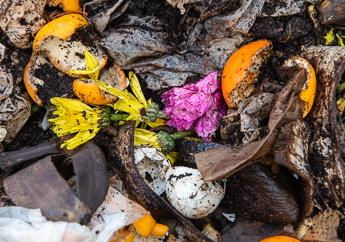
According to the U.S. Environmental Protection Agency, food waste and yard waste currently make up more than 28% of the waste we throw away. Composting has become an increasingly popular activity to combat this issue. By using food scraps and yard waste to make compost, we keep those materials out of our landfills, where they take up valuable space and release methane, a greenhouse gas.
Compost is a humus-like product made from decomposed organic materials. Compost is a natural fertilizer that can be added to soil to help retain moisture, reduce erosion, feed plants, improve the soil around trees and shrubs and top dress lawns. Compost stimulates plant growth through time release nutrients. It also protects the landscape against weather extremes, especially drought, by keeping soils warmer in winter and cooler in summer.
The most common ways to create compost include static piles, aerated piles, aerated windrows, in-vessel, mass bed and vermicomposting. If you are looking for information about large-scale or commercial composting, visit Composting - Beyond the Backyard: Large-Scale Operations. If composting at home peaks your interest, review the department's Homeowners’ Composting Guide - PUB0183 fact sheet.
For those homeowners who do not have the space, uses or physical ability to compost their yard waste, many municipalities have set up municipal composting programs or offer special leaf and grass collection services. Many of these programs provide the finished product to residents at little or no additional cost. Check with your city or county public works department, university extension agent or your local trash hauler to find out which options are available to you.
Additional Resources:
- Circle Compost Bin - PUB1085
- Community Composting - EPA
- Wood and Wire Cage-type Composting Bin - PUB0213
- Wood and Wire Stationary 3-Bin System - PUB0214
- Worm Composting Bin - PUB0215
Video Series (Grades 4-8)
- Break It Down! The Compost Connection - Part 1 and Part 2
- Break it Down! The Compost Connection Video Supplement - PUB0697
